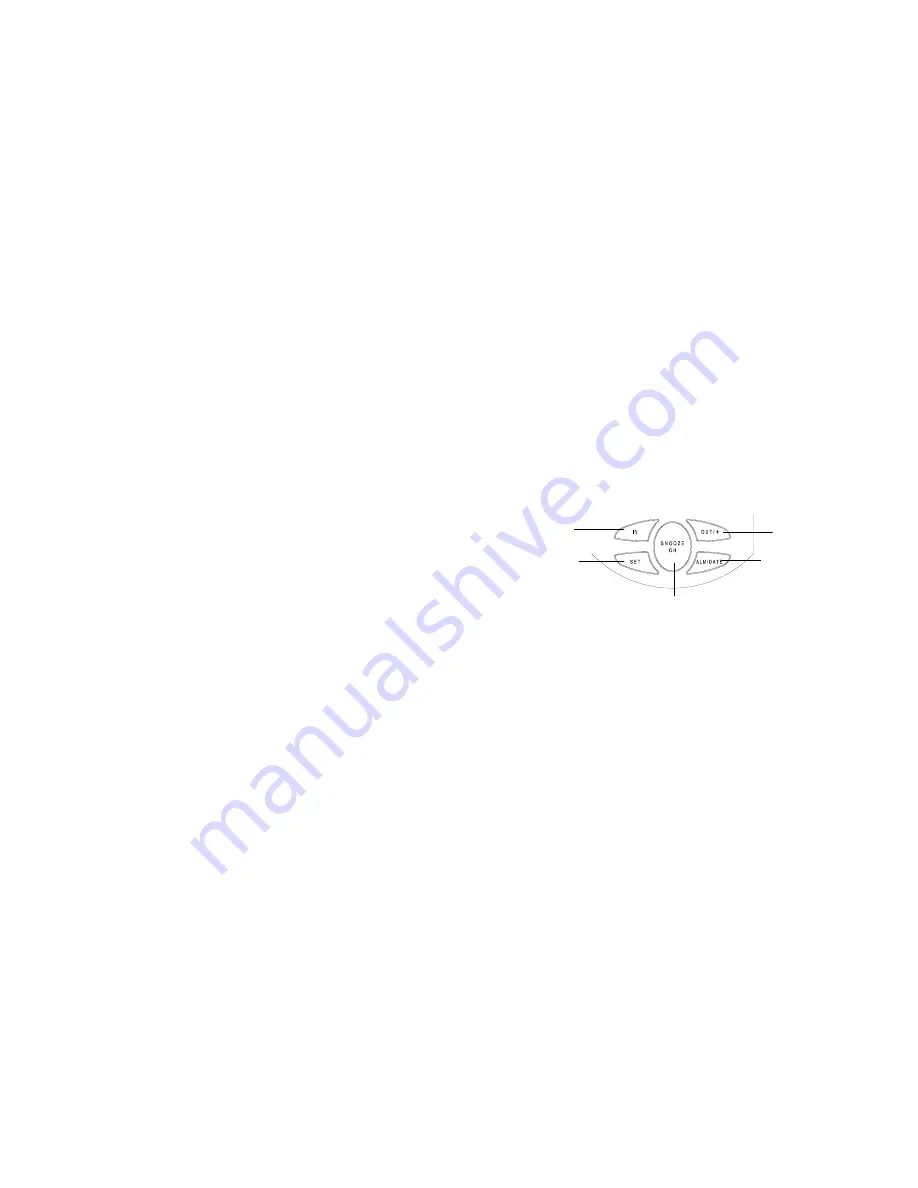
displayed. If the indoor temperature and humidity are not displayed after
15
seconds,
remove
the batteries and wait for at least 1 minute before reinserting them. Once the indoor data is
displayed proceed to step 2.
2.
Within 3 minutes of activating the Weather station, place the batteries into the transmitter (see
“
How to install and replace batteries in the Thermo-Hygro outdoor transmitter
“ above).
3.
After inserting the batteries into the transmitter, the Weather station will start receiving data
from the transmitter.
The outdoor temperature and humidity data should then be displayed on
the Weather station
. If this does not happen after 3 minutes, the batteries will need to be
removed from both units and reset from step 1.
4.
The Weather station can take up to 3 remote transmitters. If you have purchased additional
transmitters, follow step 2 for all extra transmitters. However, ensure that you leave 10
seconds in between the reception of the last transmitter and the set-up of the following
transmitter. The Weather station will number the transmitters in the order of set-up, i.e. the
first transmitter will have the temperature and humidity displayed with the number 1 against it
and so on.
5.
Before all the transmitters are set up, there is a testing period, during which the display
switches quickly between all the received transmitters at random, according to which random
transmission it receives. The process will stop automatically if
up to 3 transmitters are
received or
no keys are pressed for a few minutes.
6.
Once the remote data
have been received
and displayed on the Weather station, the DCF-77
time code reception is automatically started. This takes typically between 3-5 minutes in good
conditions. This time period is an excellent opportunity to locate the transmitter(s) in suitable
location(s) outdoors. In order to ensure sufficient 433 MHz transmission however, this should
under good conditions be no more than
100 meters
from where the Weather station will be
finally positioned (see notes on
“Positioning”
and
“433MHz Reception”
).
IN key
OUT/+ key
ALM/DATE key
SET key
7.
If after 10 minutes, the DCF time has not been received, use the SET key to manually enter a
time and date initially. The clock will automatically attempt to receive the DCF time
at each full
hour
. When this is successful, the received time will override the manually set time. The date
is also updated with the received time. (Please refer also to notes on
“Radio controlled Time
Reception”
and
“Manual Time Setting”
).
SNOOZE/CH key
Note:
In the event of changing batteries of the units, ensure the batteries do not spring free from the
contacts. Always wait at least
1 minute
after removing the batteries before reinserting, otherwise
start up and transmission problems may occur.
RESETTING
The Weather Station and the Thermo-hygro transmitter need to be reset when one of the following
conditions occur:
•
Unsuccessful 433MHz signal reception.
•
Malfunction on the units.
•
Batteries replacement.
For resetting, remove all batteries from the units. Wait at least
for 1 minute
before powering up the
Weather station again. Proceed from step 1 in
“Setting Up”
.
DCF RADIO CONTROLLED TIME
The time base for the radio controlled time is a Cesium Atomic Clock operated by the Physikalisch
Technische Bundesanstalt Braunschweig which has a time deviation of less than one second in one
million years. The time is coded and transmitted from Mainflingen near Frankfurt via frequency
signal DCF-77 (77.5 kHz) and has a transmitting range of approximately 1,500 km. Your radio-
controlled Weather Station receives this signal and converts it to show the precise time in summer
or wintertime.
The quality of the reception depends greatly on the geographic location. In normal cases, there
should be no reception problems within a 1500km radius of Frankfurt.
Once the
outdoor data
reception test period is completed
, the DCF tower icon in the clock display
will start flashing in the upper left corner. This indicates that the clock has detected that there is a
radio signal present and is trying to receive it. When the time code is received, the DCF tower
becomes permanently lit and the time will be displayed.
If the tower icon flashes, but does not set the time or the DCF tower does not appear at all, then
please take note of the following:
•
Recommended distance to any interfering sources like computer monitors or TV sets is a
minimum of 1.5 - 2 meters.
•
Within ferro-concrete rooms (basements, superstructures), the received signal is naturally
weakened. In extreme cases, please place the unit close to a window and/ or point its front or
back towards the Frankfurt transmitter.
•
During nighttime, the atmospheric disturbances are usually less severe and reception is
possible in most cases. A single daily reception is adequate to keep the accuracy deviation
below 1 second.
FUNCTION KEYS:
Weather Station:
The Weather Station has 5 easy to use function keys:
SET key
•
Press and hold the key to enter manual setting modes: LCD contrast, time zone, time
reception ON/OFF, 12/24 hour display, manual time setting, calendar, temperature °C/°F,
pressure hPa/inHg, relative pressure value,
and weather icon sensitivity setting
•
Reset all MIN/MAX records
•
Stop the alarm during alarm ringing
•
Stop snooze mode
•
Back-light
on
ALM/DATE key
•
Press and hold key for
3
seconds to enter the alarm setting mode
•
Active/de-active the alarm time
•
Stop the alarm during alarm ringing
•
Stop snooze mode
•
Display
date
•
Back-light
on
IN key
•
Press to toggle between
MAX/MIN
and current indoor temperature/humidity data
•
Press to set the alarm hour (inside alarm setting mode)
•
Decrease relative pressure value (within manual set mode)
•
Stop the alarm during alarm ringing
•
Stop snooze mode
•
Back-light
on


























